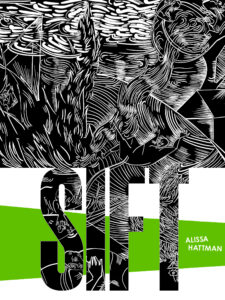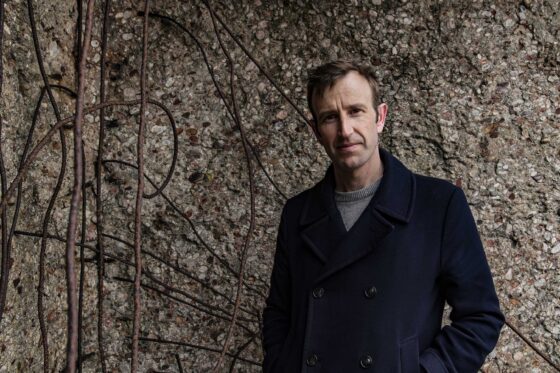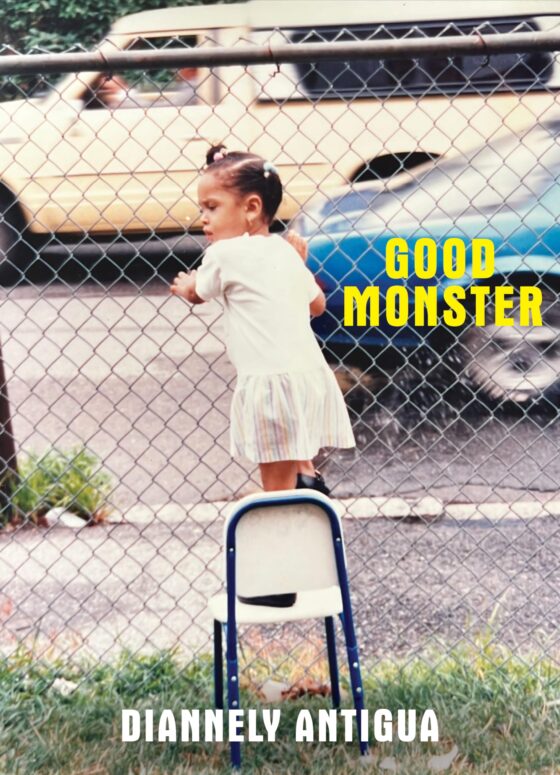
I first fell in love with Alissa Hattman’s writing when I was introduced to her short stories—a favorite being “Bearing,” about a pregnant couple who stumble upon a deranged pheasant collector. It’s set during the time of Columbine, of Y2K, of crappy news. Her stories often explore our need for comfort and truth within our ever-changing and damaged world. And in many of them, our hope is that compassion prevails.
In Hattman’s debut novel Sift, we see a similar search for truth, explored through her lean and dazzling prose. We meet the narrator, Tortula, and The Driver, who set out on a dystopian journey through the terrains in search of fertile ground to plant crops. They travel across blackened fields, through smoke-filled air, past a charred city and desert, until finally reaching a mountain. It’s in these landscapes that we bear witness to Tortula’s meditations on memory and connection, on nature and letting go, and what it means to exist in a world for people, when there are no people around.
Sift is a pertinent story, drawing many parallels to the sentiments one may have experienced in the past few years: loss, grief and the longing for connection. Hattman wrote Sift during the beginning of the COVID-19 pandemic, fearing her loved ones would catch it and die. The novel started as a series of letters to her mother, and soon enough Hattman realized she was writing to an imagined mother, one who had died. Then, “as I kept writing,” Hattman writes in an Instagram post from the novel’s publisher The 3rd Thing, “I realized that I was also writing a goodbye letter to humanity.” And what better setting than a dystopian landscape for Tortuga to say goodbye to the person she loved most?
The novel is told through a series of fleeting vignettes, which give the work a transient quality, echoing the ephemeral nature of life. Some vignettes are letters to Tortula’s mother, which recount memories of life pre-dystopia. Others tell the story of Tortula’s journey with The Driver. Then there are the vignettes that resemble definitions of Tortula’s natural (and sometimes unnatural) findings:
TADPOLE Black dot in the center of each orb. Tiny eyes in a glass bowl. A dot eats its way into the wet underworld. Gills. Translucent tail. Dark comet darts in a whoosh. Glands, mouth. Lungs. A horror in the hind quarters.
Tortula and The Driver start their journey by first grasping what is left of the world: an ashy and somewhat unbreathable earth. Tortula is headachy, learns to sip air, and altogether tries to adapt to the landscape. They travel through fields of ash and eventually come to an unclean river. It is here, perhaps, that we see the first obvious glimmer of the fantastic. Because in Sift, the fantastic appears, transforms and redirects—almost like improv. We say yes to the magic and see where it takes us. And Hattman’s choices delight me every time. After drinking from the river, The Driver vomits water and the water contains pond life—tadpoles, snails, and black algae, bottle caps “slicked with half-memories and pain.” This is when Tortula scoops up the pond water and watches The Driver’s stories “swirl with [her] own.” We see many moments like this: A vehicle that changes shape from car to dune buggy to helicopter, a bundle of moss that grows from a cut in Tortula’s forehead, and The Driver, who eventually multiplies and becomes many. On some level, the novel seems to know when it’s in need of the fantastic—of tiny inexplicable moments that become metaphors for our human experiences. And these surprises are what make the novel so honest and self-aware—almost as if, like the dune buggy, it listens to itself and changes when there’s some kind of a truth to behold.
Memory is another theme that runs throughout Sift. As with the pond of swirling stories, we see memory embodied in the letters to Tortula’s dead mother. Through them, we gain glimpses of a world on the brink of dystopia, plagued by “heat, drought. Lockdown. Poisoned atmosphere. The new regime.” In one letter to Mother, we see a memory of a woman in a grocery store with “flour-powdered arms.”
Remember, at the end, how you said that breathing was a chore? Like inhaling flour, you said. Bread aplenty. The slicer’s hum, the blade. She slipped the sourdough into the plastic bag. One gold twist tie.
It’s in these moments that tenderness and beauty coexist with the bleak. We see the start of a dying world through a nostalgic lens. Tortula indulges in these memories, and also struggles with the idea of leaving Mother, of giving up on her. They are bittersweet recollections, full of love and regret, of grief and a seeking to understand. They also seem to be a source of healing for Tortula, who once, pre-dystopia, would “call up memory like medicine.” The dystopian landscape itself also offers no protection from one’s thoughts. It is a world wide open, ripe for the taking. I love how the opening below sets the stage for Tortula’s journey into the dystopian world, the one that she had been hiding from:
I thought that being inside would protect me, with its corners and its curtains, then a kindness took me by the throat and stretched me taut against the sky, beaming, and I found something more valuable than protection. If only you could have seen it, Mother. What light.
Because in a barren world with little protection and corners to hide, it’s also impossible to hide from our thoughts. We succumb to our memories and grief, equally in the dune buggy and in the helicopter, because in this life there is “nowhere to hide in the desert except maybe a car full of smoke.” In Sift, “memory makes what it needs to make”; it is an almost self-aware and autonomous thing.
One of the things this novel does best is muse on the need for connection. It’s Tortula’s most vital need, as she frequently seeks it in her relationship with The Driver. We see this in little moments between them—when The Driver puts her hand tenderly on Tortula’s mossy forehead cut, when Tortula dreams they have “a kind of sex,” and when The Driver often pulls away from Tortula’s requests for stories and vulnerability. Perhaps it’s comfort that Tortula seeks most through these interactions.
If you asked me now, what I miss most is the possibility people hold, how each person contains new stories, new attitudes, a new education. How much I could learn and feel and evolve (or devolve depending) with each conversation. I miss both the up-close and the far-off potential, the bright-color blur of groups of people congregating, expressions I’d like to see closer, and then again, and then to understand.
Throughout their journey Tortula begins to learn that you can’t hold on to an idea of a person: they are always changing and therefore one’s connection to them too must change. And so it seems that human relationships are fickle and uncertain. But what then is the alternative but to listen, to receive, to open and unshelter oneself? It is a little like breaking oneself open, an image the novel frequently returns to.
And so we come to the title, Sift. To separate. It appears in descriptions of Tortula, in her forehead splitting open. We also see it as she experiences her physical self, feeling “granular, tiny particles of [herself] blowing away. Do you feel that? The separating?” In the end, she also lets The Driver’s stories, the ones she finally tells, “sift through [her] body.” And when Tortula tries to hack free from the mountain, she “sift[s] the earth, takes sips of air.” What Tortula soon discovers is a need to let go, to loosen her grip, and perhaps this is the separating. A separation from one’s ego and our expectations of ourselves and others. The Driver is the perfect mirror of this from the very beginning, when she describes the nature of the gypsum crystals in the desert. At first Tortula is in awe of the sand’s brightness, and perceives it as white. But The Driver quickly corrects her that it is clear.
The Driver sighs. Maybe she is tired of explaining. You misinterpret the sand, she says. Your reading of it is too narrow, too self-involved….Imagine a story that doesn’t begin with you.
The result, then, at the end of the world, is a more grounded existence. For Tortula, “seeing anything alive brings [her] comfort.” She is no longer simply surviving the landscape, but realizes she is both separate from the landscape and a part of it altogether. In the end, the discovery is a reckoning with oneself, the understanding that we are nothing but a stone among many stones, at the mercy of the elements.
I adore this novel. Hattman is a masterful writer, a fierce observer of our flawed world, but also a keen beholder of beauty and emotional truth. Together, the two make for a powerful pair in storytelling. And like Tortula and the gypsum sand, I can’t help but admire Sift for its brilliance—for no matter which way you look at it, you’ll find a flicker of light.
***





